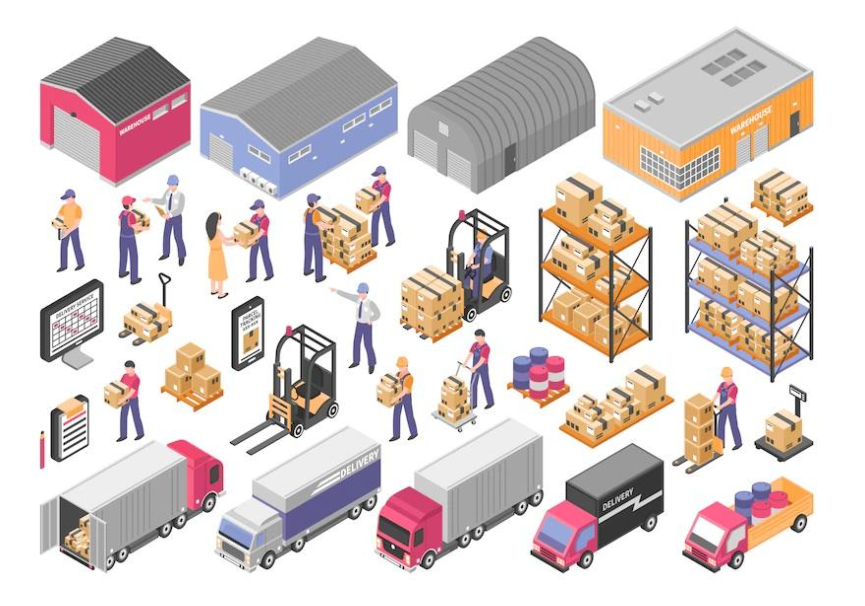THE HISTORY OF A VISIBILITY SYSTEM

What is the first step in the introduction of a supply chain visibility system at a manufacturer or a supplier?
A client of ours, a company manufacturing durable consumer goods, had already taken steps to increase the transparency of their supply chain, but tried to rely on their own internal transportation management system (TMS), managed by an insider freight forwarding agent. Nevertheless, the limitations of this endeavour have soon surfaced; most notably: the problems inherent in the given supply chain became noticeable only when they cropped up. Delays, errors, bottlenecks? They were able to do something about them only after they had been discovered and identified as a problem.
We need visibility, but in what system?
This made them realise that it was essential to apply a reliable visibility system; and they considered several methods.
One of them was a purely software solution that would have integrated the data into a system to provide greater insight into the supply chain. However, the investigation revealed that this solution poses several problems.
On the one hand, the company’s expensive software system would have to be run by their own employees, increasing their workload. On the other hand, the freight forwarder would be compelled to rely on the company’s self-reported data; not necessarily reflecting actual reality. Incorrect shipment details, unreported changes in transportation equipment, routing and scheduling are common problems. If the system operator is uninformed of them, he becomes mindful of potential problems in the system only after a shipment is delayed or fails to arrive.
Software-based supply management systems can be compared to an expensive tool that we buy to avoid having someone else solve our problems for us. We have the tool, we try to learn how to use it, but it still remains the task of our staff to use it, which they surely cannot do with the same efficiency and reliability as a specialist can. In a way, this software-based approach is a kind of simplified DIY expertise acquired from watching ‘how to’ videos on YouTube.
The experience of many e-track clients over the years has shown that the European freight space is rather complex and generates a large number of unexpected situations. That is why e-track has developed a service that combines computing precision and flexible human situation assessment.
The complete transparency system of e-track not only provides a tool but also a solution. We also carry out the necessary supervision, inspection and intervention, which frees up time for the freight forwarder; plus the principal can rest assured that the system is operated by experienced professionals.
This kind of external monitoring allows us to have a greater insight into the ongoing processes and to correct them before the client can even notice them. One such typical case is that we can check the freight before departure to make sure the GPS and other data included in the system are correct. If necessary, we take action, repair and reorganize, and the customer only perceives that his supply system works with less disruption.
The client discussed in the above example has also been persuaded by these benefits to choose our system.
After the decision: How to implement it?
Needless to say, the introduction of such a system is preceded by thorough preparation and a trial period.
The first step in this case was to investigate the areas where the principal was experiencing problems and to integrate into the system those logistics providers who were prepared to support such a system.
Our customers always receive customised solutions from us, so depending on the size of the company and the complexity of the processes, a pilot period of 1-6 months can be expected.
In the presented case, additional logistics partners were involved after the trial period and the system was progressively perfected before we finalised it after 1 year.
The trial period is also helpful in helping the client prepare for the implementation of the entire system from a budget perspective. In some cases, the licensing of the introduction might take up as much time as building up the system itself.
Our client’s first feedback after finalisation was that they admitted they knew little about their own processes and, looking back, they indeed needed an unbiased insight to detect existing problems and to operate the system more efficiently.
Moreover, they experienced a massive improvement in their customer satisfaction indicators. The resultant accurate and reliable service has improved the prestige of both the company and the brand.
For us at e-track, the greatest praise is when our clients say they are happy to have chosen the professional package instead of the expensive tool to carry out the tasks for them.
 .
.